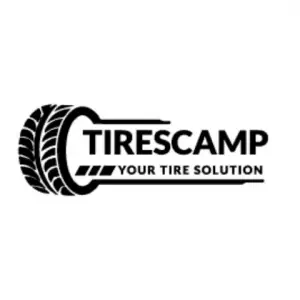Larger tires increase the performance and look of your vehicle. Yet, people are confused about which tire size to choose and how big can you go.
So, is it possible to fit 38 inch tires on 17 inch rims?
Yes, it is possible to fit 38-inch tires on 17-inch rims, but it is not appropriate for regular use, and it is costly. But for off-road driving, it is undoubtedly beneficial. You may improve your vehicle’s off-road capability, grip and traction, safe braking, and overall driving comfort by changing to bigger tires.
So keep reading the article to find out how you fit 38-inch tires on 17-inch rims. we’ll be here to guide you with all that you need!
Can I Put 38-inch Tires on 17-inch Rims?
Yes, it is possible to put a 38-inch tire on 17-inch rims. There are a lot of possible tire sizes that can be supported by the rim size of 17 inches. Popular tire sizes for 17-inch rims are 265/70R17, 225/65R17, and 215/55R17. But 38 inches is not a regular size for the rim size of 17 inches.
All Possible Combinations Of 38 Inch Tires On 17 Inch Rims
So, let’s find out the sidewall height for 38 inches tire on 17 inches rim.
For the combination of 38 inches tires on 17 inches rims,
2 * Sidewall height = 38 – 17 inches
2 * Sidewall height = 21 inches
Sidewall height = 21/2 inches
So, Sidewall height = 10.5 inches.
Now, For Example, We have a tire size of 355/75/R17
Where,
355 = Section width in millimetres
75 = Aspect ratio (ratio of the section height to section width)
R17 = Rim diameter in inches
R = Radial Construction
That tire is a 355 mm section width and the section height (from rim to tread) is 75% of 355 mm = 355 * .75 = 266.25 mm
Since the rim is measured in inches, and the rest of the tire is in mm, you take the width (355 mm) and divide that by 25.4 = 10 .5 inches wide
You will need a sidewall width of 10.5 inches. So You can put 38 inches tire on a 17-inch rim like the tire 355/75/R17 tire size.
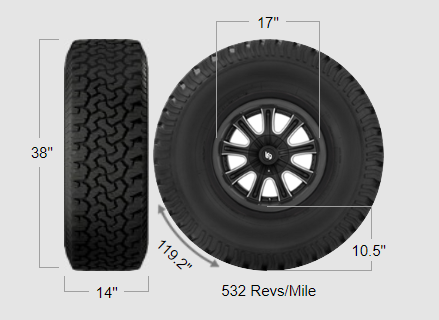
The following table is for possible combinations of tires for 38-inch tires on 17-inch rims
| Tire Size | Tire Height (Diameter) | Wheel Size | Sidewall Height | Tire Width | Tire Circumference | |||||
| inch | mm | inch | mm | inch | mm | inch | mm | inch | mm | |
| 355/75/R17 | 38 | 964 | 17 | 432 | 10.5 | 266 | 14 | 355 | 119.3 | 3029 |
| 335/80/R17 | 38 | 964 | 17 | 432 | 10.5 | 266 | 14 | 355 | 119.3 | 3029 |
| 315/85/R17 | 38 | 964 | 17 | 432 | 10.5 | 266 | 14 | 355 | 119.3 | 3029 |
Similarly, you can also figure out the possible tires for 33-inch tires with 16-inch rims.
How to Fit 38 Inch Tire on 17 Inch Rim
When you look to replace your vehicle tire with a larger one, there is a severe issue with your tire clearance. Lift kit installation is the first thing that comes to your mind. There are several sorts of lifts, each with a clear purpose.
There are three different kinds of lift kits,
- Small lift kits (two to three inches) – for 32 or 33-inch tire
- Big lift kits (four or more inches) – for 36, 38, or even 40-inch tire
- Portal gear lifts
As our tire size is 38 inches we should follow the Big Lift Kit formula.
Big Lift kit:
Larger lift kits cost more money since they replace your existing suspension system.
But it will provide you benefits like,
- Huge tire clearance
- A wider machine
- An imposing look
Big lifts are expensive; the price of a big lift might range from $1,000 to $2,500 or more.
Tools:
Required tools in Big lift kit
- Vehicle jacks and jack stands
- Socket wrench
- Torque wrench
- Lug wrench
- Screwdriver,
Step-by-Step Guide:
Be sure that the lift kit you bought was designed for your specific vehicle by checking the manufacturer’s website.
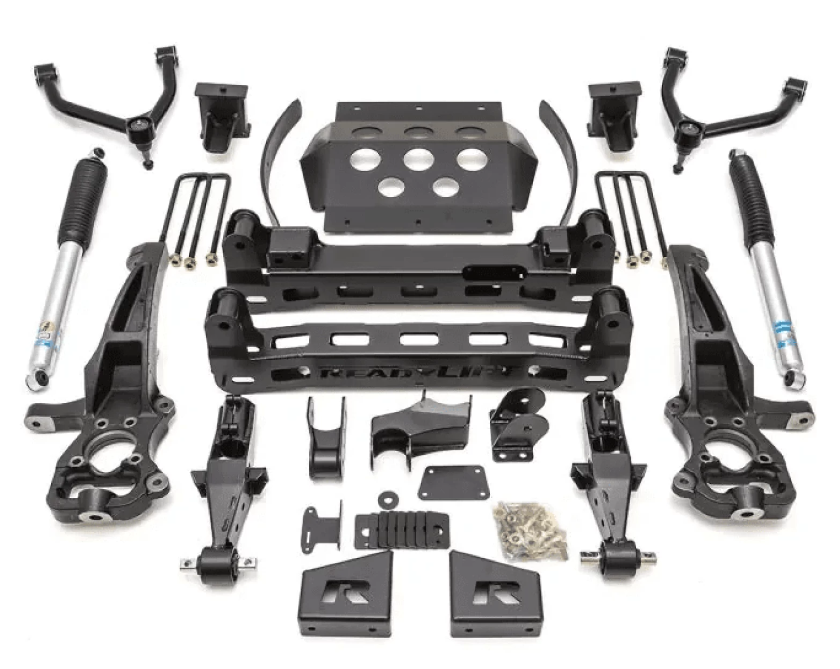
Below are the steps on how to install a lift kit on your truck,
Step 1: Take out the negative cable from the battery.
In order to install a lift kit in the vehicle it is safe to disconnect the negative cable from the battery because it is a safety measure to protect or prevent any kind of electrical accident of the person or the vehicle itself.
Step 2: Loosen the lug nut so that you can easily remove the tire while lifting its up.
In order to loosen the lug nut, use lug wrenches. After setting the lug wrench in the lug nut then spin the wrenches counterclockwise to loosen the lug nuts.
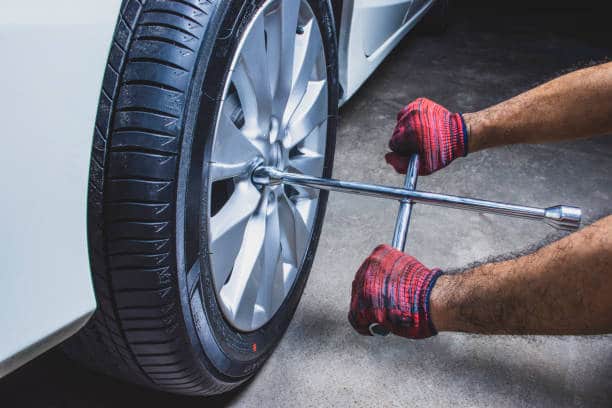
Step 3: Lift the car using jack stands. Making sure the vehicle’s center of gravity is in the correct place. First locate two jacking points in the front panel, and two jacking points in the rare panel of the vehicle. Using a floor jack, raise the car slowly and carefully until it reaches the desired height.
Place the jack stands under the recommended jacking points, and lower the car onto the stands. Make sure the stands are positioned securely and the car is stable before working underneath it. Give the car a gentle push to check the stability of the jack stands.
If the car wobbles or feels unstable, you may need to reposition the jack stands or use a different set of jacking points.
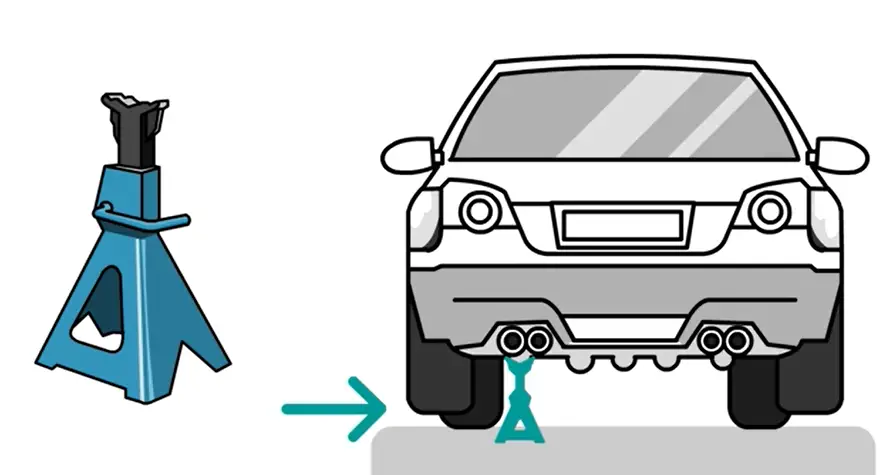
Step 4: Take off the wheels and put them somewhere safe.
After removing the lug nuts, put both your hands on two sides of the tire and hold it firmly and pull towards yourself, it the tire has not been removed for a long time it might need a bit more force while pulling the tire. It is best practice to put the tire in a safe place in order to save the Tire Pressure Monitoring System (TPMS) sensor.
Step 5: Remove your vehicle’s shocks, springs, and old U-bolts.
Remove the vehicle’s shocks, whose sole purpose is to prevent the vehicle from bouncing. The Shock absorber is located behind the tires and works alongside the separately mounted springs.
Loosen the top and bottom fasteners of the shock absorbers and pull them away from the mounting boss of the vehicle.
In order to remove the U-bolt, you need to unscrew the bottom nuts along with the washers using the appropriate size deep well socket and carefully remove the metal bar between the two tines and then lift up the U-bolt from its position.
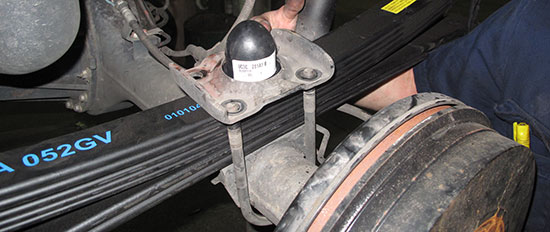
Step 6: Install the new bolts and shocks and suspension while following your kit’s instructions.
Install the new control arm and remove the spring from the old shocks by removing the nuts and installing the spring in the new shocks and reattaching the nuts. Install the new shock absorber. Carefully place the metal bar between the two lines and install the U-bolt.
Step 7: Use your torque wrench to tighten all nuts and parts to the right specifications.
Tighten up all the nuts along with washers placed properly by using the appropriate torque wrench; making sure the required gap is achieved. Use the same method for the other tires.
Step 8: Attach your new tire.
Attach the new 38” tires and install the lug nuts and tighten them up properly using a lug wrench keeping tire alignments maintained. And recheck that all the nuts and jacks have been placed properly
Step 9: Slowly lower your vehicle while maintaining all the levels.
First, we have to put our floor jack on the control arm and lift it up by pumping it up. Once it has the jack stand is free from the jacking point then slide it away from the vehicle.
Release the pressure from the floor jack slowly, keeping in mind not to release the full pressure at once. Once the pressures are released then remove the floor jacks and then connect the negative cable of the battery.
Take a test run to check that the lift kit has been installed properly and functioning properly.
If you follow the above-mentioned steps carefully you can easily install a Lift kit on your vehicle.
For better visualization, check out this video.
Similarly, you can easily do how to fit a 37-inch tire on 16 in rims.
Why 38-inch Tires on 17-inch Rims?
There are lots of benefits you will get if you increase the tire size of your vehicle while off-tracking. It may cause many dangers while driving with a normal tire on the off-track road. In the below mention what benefit you will get if you put 38-inch Tires on 17-inch Rims,
Better Off-Road Performance:
Bigger tires provide more ground clearance, which may improve off-road handling. The bigger tire may help you with the performance also, and it will save the vehicle from uneven falls.
Enhanced Grip & Traction:
Bigger tires usually offer greater elasticity. This indicates that the vehicle’s tires can grip the road easily, improving traction. The vehicle handles become easier. Wider wheels provide better traction on snow.
Better Stability:
Wider tires provide a larger contact on the patch, also increasing road grip. This helps the driver maintain control and safety, especially at higher speeds.
Safe Braking:
In general, larger tires reduce stopping distances, giving the driver more command of the vehicle. This also means that there is a higher level of safety since there is less chance of slipping.
Overall Control:
An improved set of tires has a positive effect on a vehicle’s handling, stability, and grip. For vehicles that tend to understeer or oversteer, this might be beneficial since larger tires make it easier for the driver to make the necessary adjustments, keeping the ride smooth and risk-free.
Driving Comfort:
The bigger tire feature is more rubber compounds. Also providing additional cushioning on city roads and muddy terrain. That makes driving more pleasant. Off-road drivers often choose larger tyres to offer a comfortable, high-quality ride.
Frequently Asked Questions (FAQs):
What is the Widest Tire for 17-Inch Wheels?
The widest tire for a 17-inch wheel is the 54-inch tire. But is not for regular use.
Due to the substantial section width of tyres in the 54/19.5R17 size, they should be used only on suitable vehicles.
Can You Put a Bigger Tire on the Same Rim?
Yes, you can put a bigger tire on the same rim size. For example, although the diameter of your vehicle’s rims is a fixed size, you may purchase tires of different diameters so long as their centre is the same size.
Do Bigger Tires Affect the Transmission?
Yes, it will affect transmission. Changing to larger tires has a broad impact on a vehicle. It’s like a ripple effect, in a way. Transmission gear ratios are affected by variations in tire size. Because of this, the engine will spin more slowly and more low-end torque will be needed to move the wheels.
Conclusion
Here go all to fit 38 inch tires on 17 inch rims.
By tire Clearance, you can easily fix the bigger tire. The updated tires will give you off-road performance, better grip and traction, safe braking and driving comfort while off-road driving and on muds road.
